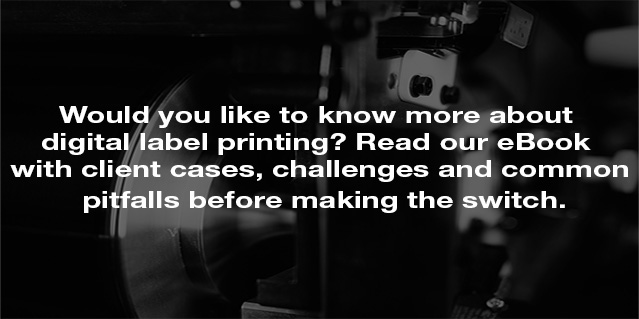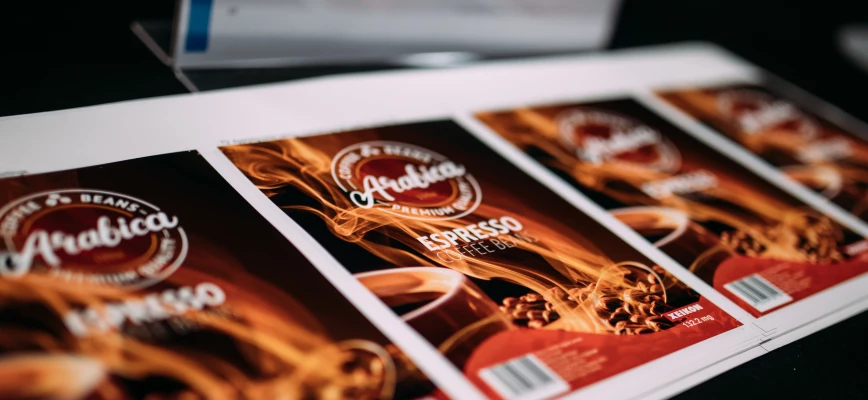18/05/2016
by Danny Mertens
The printing world has become more challenging over the last years with customers demanding an ever-increasing level of flexibility, high-quality results and competitive prices
In most cases, if not all, a shift to digital printing technology proves to be the best solution for label converters that want to keep up with the market. Unfortunately, many flexographic printers are reluctant to embrace the new technology. For those people, we have made a list of all pros and cons.
PRO: COST EFFICIENCY OF SMALL PRINT JOBS
Digital printing is the ideal method for short to medium print jobs. Since there are no costs for printing plates and setups, price breaks for digital printers come at much lower quantities than traditional printers. There is no need for bulk stock, saving your company a lot of money on warehousing and storage.
CON: DIGITAL PRINTING IS EXPENSIVE
It’s true that digital printing presses can cost a lot of money, which might be a challenging for smaller companies. However, there are cheaper alternatives available on the market, such as smaller table top machines. A word of warning, though: these may be less expensive to acquire but in the long run they are actually less interesting because of high material costs for ink. Plus, these machines require you to use specific, more expensive substrates. A professional digital press is always the best solution in the long run. They require a good deal of preparation but are more versatile – allowing you to diversify – and will last for years.
In comparison, flexography is considerably more expensive to implement when starting from scratch . Purchasing all of the upfront press technology, such as cylinders, rollers and tools represents a serious costs. Additionally Flexography requires a flexo plate per color (or more) and that cost can be more than the cost of the labels themselves depending on the run length.
PRO: INCREASED FLEXIBILITY THANKS TO DIGITAL PRINTING
No printing plates means that customers can tailor their message to their audience, the season, events, promotion… Since all the data is digital, it doesn’t take a lot of resources to produce different versions of the same label. With digital printing, there are little to no limitations to what you can do. You can shift your business from label printer to service provider based on labels. Rather than putting labels in the inventory (printed long run to get lower cost price), store the digital files and print when required.
CON: HIGHER MAINTENANCE COSTS
If you want to get the most out of any machine, you need to treat it with care and respect. Maintenance is crucial to increase the lifespan of both digital and flexographic presses. But do digital presses really need more maintenance? No, they do not. Flexographic machines require quite a lot of work too: mounting, dismounting and archiving printing plates, cleaning Anilox rolls, checking UV curing systems, replacing print sleeves, … As this happens outside of the presses you might not be aware of this.
PRO: LOWER TURNAROUND TIMES
Digital presses are faster than flexographic presses for smaller runs. The label converter simply locates the design on the computer and clicks print. Flexography, on the other hand, involves the process of creating the printing plate, filling the ink tank and assembling the ink roll and plate cylinder. The setup time before each job is much higher, resulting in higher turnaround times for small print jobs. Furthermore, the consistency between reprints is by far easier since there are less parameters outside a digital press than with a flexo press.
DIGITAL PRINTING TAKEAWAYS
- Digital printing is the ideal method for short to medium print jobs.
- Acquiring a digital printing press is a big investment but it will last for years.
- No printing plates means that customers can tailor their message to their audience any way they like.
- Digital presses don’t need more maintenance than flexo machines.
- Digital presses are faster than flexographic presses for smaller runs.




